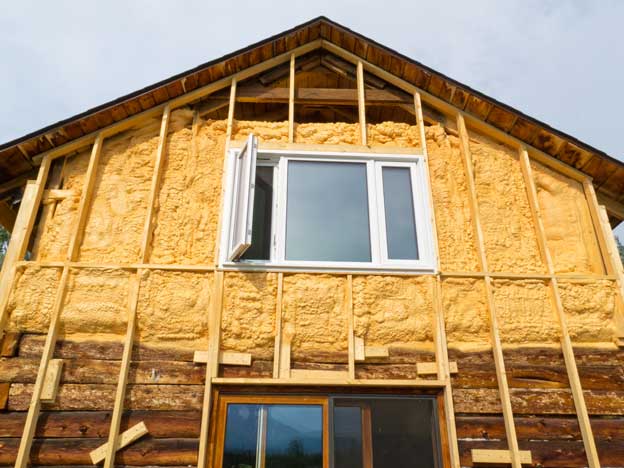Spray Foam Insulation Strengthens Your Home
4. Spray Foam Insulation Strengthens Your Home

Apart from having a clean, safe and well maintained home, it should also be strong and durable in order to protect its dwellers from various environmental elements. Spray foam insulation strengthens your home and adds durability to it.
Spray Foam Insulation in Walls
The walls in your home are its main structural component. In wood frame building, total weight of the roof, shingles, standing rainwater or snow can add weight to the structure and apply downward force on walls causing a compressive force. Strong winds and gusts from thunderstorms also subject your walls to lateral forces which results to distortions. This is commonly known as the “shearing force”.
Building codes require that your home’s walls be designed to withstand these various forces and loads. However, when walls are built to just the minimum standards, while still safe, symptoms of movement such as creaking and shaking during high winds or occupant usage often occurs. Spray foam insulation inside your walls reinforce its strength making it more durable and sturdy. With this added rigidity, there will be less wall movement due to wind, vibration, and occupant activity.
When your walls are installed with spray foam insulation, they become stronger and this means they can support the entirety of your property more efficiently. You can rest well at night knowing that you are protected from “shakes” and vibrations because you have a strong insulation material installed.
Spray Foam Insulation in Roofs
Installing spray foam insulation in your roofing can enhance the strength of your building. Because spray foam insulation conforms and adheres to the surface on which it is sprayed, it forms a powerful bond to protect the roof. It eliminates the possibility of water seeping through seams and fasteners. Also, spray foam insulation can be applied in a sloped manner to enable water to drain off the roof”.
The bond that spray foam insulation forms to the roof can raise the building’s resistance to wind uplifts. Because of this, during periods of high wind, a home with a spray foam roof insulation normally experiences less damage than a building without SPF. A prominent spray foam consultant found that “when added to the interior of a construction, spray foam ‘glues’ the entire building together, improving entire wind and pressurization resistance.
The Federal Emergency Management Agency (FEMA), which aids in natural disasters, has classified spray foam insulation as exceptionally resistant to floodwater damage saying, “These materials can survive wetting and drying and may be successfully cleaned after a flood to render them free of most harmful pollutants. In addition, spray foam prevents moisture and condensation throughout the building envelope, thereby helping to prevent the growth of mold and mildew. Applying spray foam insulation in the cavities of the walls increases durability of the wall systembecause of the foam’s ability to mold and adhere to the surfaceupon which it is sprayed.”

